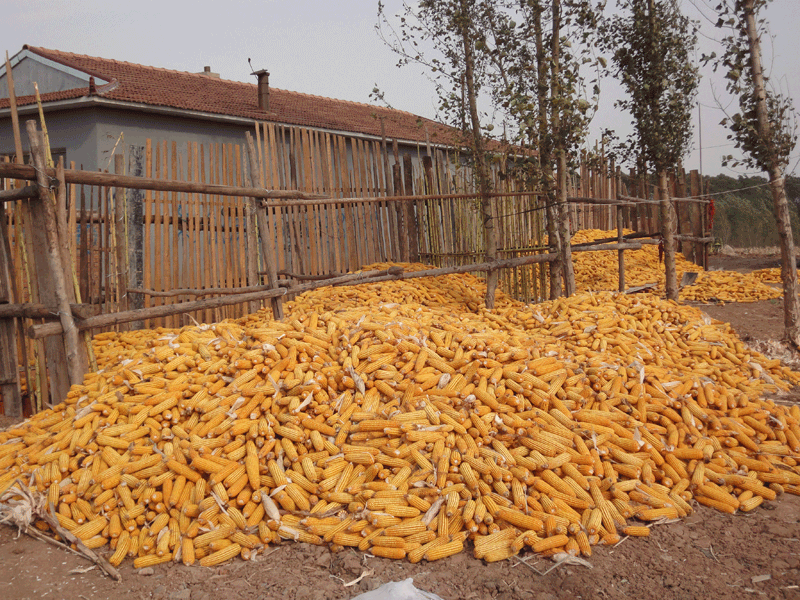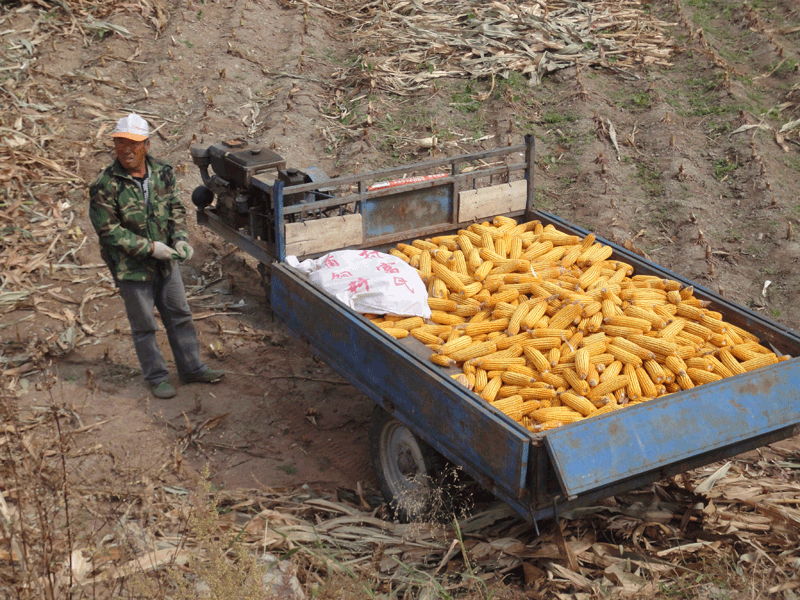It’s not just soybeans
CHINA’S AGRICULTURAL TRANSFORMATION
tour a chinese corn farm and it’s easy to think that what you see — hardworking rural families living in simple houses and tilling an acre or two with a minimum of modern technology — is an age-old relic of the past. But you would be wrong.
Like the broader economy, Chinese agriculture has transformed itself in the past 30 years, replacing large, inefficient communal farms with small family-run plots. Instead of a top-down bureaucracy, farmers now have profit incentives and market-determined prices, and productivity has soared.
PHOTO 1: CORN HARVEST IN CHINA

China has become the world’s largest agricultural economy and its fifth largest ag exporter. On just nine percent of globally sown acres, China produces
18 percent of the world’s cereal grains, 29 percent of the world’s meat and 50 percent of the world’s vegetables.
Still, domestic demand has grown even faster, and in 2004, China became a net agricultural importer.
China’s soybean imports have increased every year — in fact, China has accounted for all of the growth in world soybean import demand over the past decade.
“All signs indicate that China’s government is comfortable with importing large amounts of soy,” says Dr. Colin Carter, director of the Giannini Foundation of Agricultural Economics at the University of California-Davis. “They have constructed a lot of processing on their east coast that’s set up to handle imports.”
beyond beans
Both analysts and soybean producers increasingly see Chinese soybean imports as an established market that will grow as the Chinese economy continues to grow. The bigger question for exporting countries is the outlook for corn and wheat.
For years a significant corn exporter, China’s imports of feed grains have doubled in just a few years, according to Michael Jewison, an economist with the US Department of Agriculture’s Foreign Agricultural Service.
“Chinese hog producers are making more money on hog prices relative to corn prices,” he says, noting that the Chinese government has shifted policy in favor of more large-scale hog production. Unlike soybeans, China has resisted relying on large volumes of imported corn because of concerns about a secure food supply. According to Jewison, the Chinese “could have a policy change that could make them an importer at any moment. But that is very difficult to predict.”
A similar assessment comes from Michael Callahan, senior director of international operations for the US Grains Council, a non-profit market development organization.
PHOTO 2: CORN HARVEST IN CHINA

“Their officials keep talking about how great their crop is, but it’s hard to believe when their internal corn prices are so high. So really how good is that crop? Probably not enough to rebuild their strategic reserves to their comfort level,” says Callahan.
“That’s why they are in the market buying each time there’s a slide in prices on the board.” He suggests watching China’s internal corn prices as an indicator of what is going on.
“I would also watch what’s being said about trade relations and trade agreements with competitors. In terms of feed grain demand, don’t just look at corn,” Callahan says. “Look at what corn substitutes are being imported, like feed wheat.”
Still, Callahan sees steady growth in China’s livestock sector for the immediate future and huge demand driving China’s corn processing sector. “More and more people are coming to town and moving into the middle class, so I don’t see any let-up in demand growth unless something horrible happens to their economy,” he reports.
Nor does he see immediate signs of changes in China’s production practices that could significantly boost yields: “We don’t see prolific use of big equipment, except maybe on a few big state farms. The major production is still mom-and-pop small scale farming.”
“A lot of the outlook for corn will have to do with whether they go ahead with GM crops,” says Carter. “If they move to GM corn, that brings them closer to
self-sufficiency.”
He notes that water shortages may become a greater restraint on Chinese corn production.
indeterminate outlook
“The government hasn’t got serious about the water issue yet. They are not yet treating it like the important issue it is,” he says.
Recently returned from China, Rick Tolman, CEO of the US National Corn Growers Association, says the messages he heard from Chinese sources about further corn imports ranged from “absolutely not, never” to “yes, and significant growth over the next few years.”
For wheat, the outlook is also uncertain. China has been an erratic player in the world wheat trade, sometimes exporting and sometimes importing.
“Wheat consumption is not rising like it is for corn,” Carter explains. “So I don’t see China importing vast amounts. A change in trade would come in corn before wheat.
“We’re seeing expanding [Chinese] exports of labor-intensive crops like horticulture, but we won’t see them exporting large amounts of corn or wheat, because that’s just not as profitable as the labor-intensive commodities,” he concludes.
Still, Callahan warns, “You never know for sure what they are doing until they’ve done it. China is always full of surprises, but one thing is clear — demand for food is rapidly increasing and this bodes well for exports.” •







